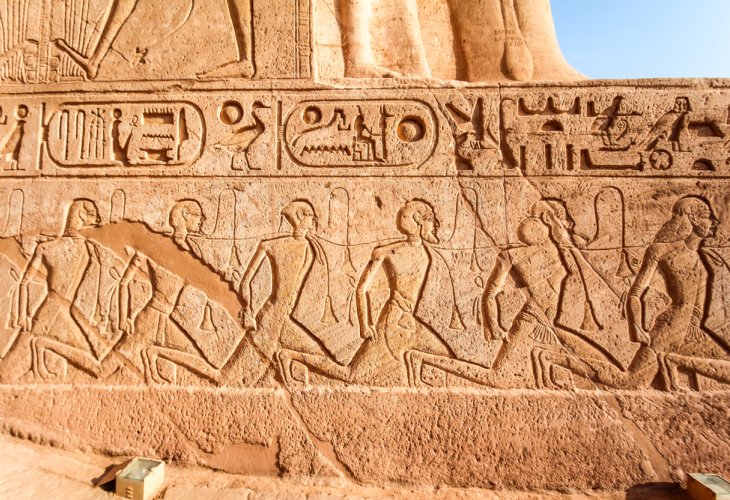Passover
A Closer Look: How the Israelites Endured Slavery in Egypt
Ancient texts and wall art help us understand the suffering our ancestors endured before Hashem redeemed them
 (Photo: Shutterstock)
(Photo: Shutterstock)The fascinating Egyptian wall paintings from 3,500 years ago depict slaves under forced labor, a glimpse into the labor and overseers of the time
We know that our ancestors were enslaved in Egypt and suffered greatly for many years. The Torah tells us what we need to know for the purpose of its lessons, but doesn’t go into full detail about daily life under slavery. That’s why it’s so meaningful and powerful to uncover anything like texts, art, or findings that help us better imagine what they went through during that first exile.
One of the most fascinating discoveries is Egyptian wall art created during that time, showing slaves working under forced labor with Egyptian overseers watching them. While we can’t say for sure that the slaves shown are Israelites, it’s significant that they are often painted with lighter skin tones than the Egyptians. This suggests they may have come from northern regions like the Land of Israel rather than neighboring African nations.
Egyptian records also speak of a group called the "Habiru" or "Apiru." These people, descended from Shem, appear in texts dating back to the era of the Patriarchs. Many scholars believe these "Habiru" were the Hebrews, descendants of Ever (Eber), the ancestor of our forefather Avraham, who is called “Avraham HaIvri,” meaning “the Hebrew.” According to ancient papyri, the Habiru were enslaved by the Egyptians, especially in the Nile Delta, which is likely the area of Goshen where the Israelites lived.
Wall paintings don’t just show construction, they also depict the slaves making bricks by hand, just as the Torah describes. When Pharaoh increased the workload on the Israelites, forcing them to gather their own straw for bricks, there may be archaeological proof of this. Professor A. Polak noted that in Tel el-Rataba, believed to be the city of Pithom, bricks have been found that lack straw, suggesting a time when straw wasn’t provided and slaves had to make do. This site dates to about 3,400 years ago, shortly before the Exodus.
One ancient Egyptian papyrus reads: “Distribute grain portions to the soldiers and the Apiru carrying stones for the temple of Ramses” (Papyrus Leiden 348). Another piece of evidence, written in hieratic script, mentions the Habiru tribes working harsh labor building the city of Pi-Ramesses, one of the cities mentioned in the Torah that the Israelites built.
There’s even a record about distributing onions to the pyramid builders. This connects directly with the Torah’s words when the Israelites complained in the desert: “We remember the fish we ate in Egypt for free... the cucumbers, melons, leeks, onions, and garlic.” These weren’t random memories. It turns out that onions and garlic were staple foods for Egyptian workers and part of their diet.
According to botanist Professor Michael Zohary, these were crops commonly grown in Egypt and used for flavoring. They weren’t animal feed but rather food meant for people especially workers. Another inscription from the same era reads, “We hunger and thirst... there’s no fish, no onions.” Even watermelons were popular in Egypt, as one New Kingdom text states, “Its sands overflow with watermelons,” quoted in Professor Shopak’s research.
Professor Zohar Amar adds that the list of vegetables mentioned in the Israelites’ complaints isn’t a coincidence. These crops like cucumbers and onions are only mentioned once in the Torah, and only in connection with Egypt. They were all common Egyptian produce, grown using irrigation. It’s likely that as part of their hard labor, the Israelites were given simple food like onions and garlic instead of wages. That was their daily sustenance.
Even the ancient Greek historian Herodotus, during his visit to Egypt, noted that on one of the pyramids there was an inscription listing the cost of radishes, onions, and garlic for the workers.
These details, from Egyptian art and writings, give us a small but vivid window into what our ancestors experienced in Egypt. They bring us closer to feeling the depth of their suffering and the greatness of their redemption. As we say at the Seder: “If Hashem had not taken our ancestors out of Egypt, we, our children, and our children’s children would still be slaves to Pharaoh.”

